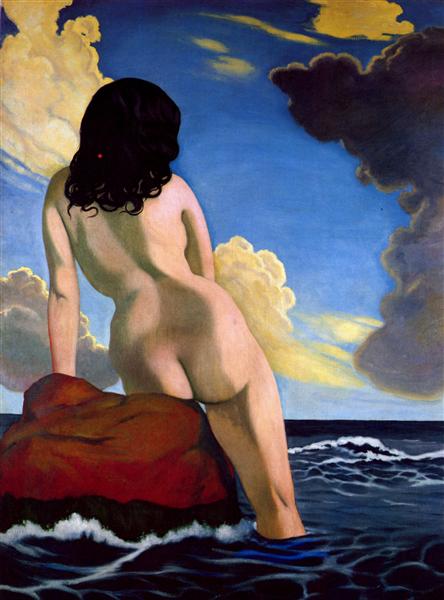Magic Realism

description
Magic Realism
Magical realism was an artistic movement of the twentieth century, a response to a realistic image of the world through a multifaceted meaning with magical inclusions.
It is generally accepted that the origins of the movement are related to the exhibition “Neue Sachlichkeit” of the post-expressionist movement of the same name in Weimar Germany in 1924.
For the first time, the term “magic realism” was used by Franz Roo in his book “Post-Expressionism. Magical Realism” in 1925.
Key ideas:
– Magical Realism rejected social and political problems at its very beginning. It focused on the side of the reality of everyday plots hidden from the naïve point of view.
– Art historians claim that sometimes there is no clear line between Magical Realism, Fantastic Realism and Surrealism.
– The artists used a variety of media. Among genres, portrait and nude were the most frequent; this is not characteristic of Fantastic Realism.
– The contrast and smoothness of the chiaroscuro transition have something in common with Art Deco, while the colour palette sometimes resembles Art Nouveau.
– Masters working in this style excluded frankly fantastic images. There is only one desire – to emphasize reality using magic elements but not to immerse the viewer in unreality.
– Although we can find pictures that indicate political or social problems, most of the works have an intangible secret meaning, strange perspectives – as if someone was spying on someone. This slightly resembles Intimism.
description
A French artist, a painter and graphic artist, master of book illustration, theater and cinema set designer. The art of Leonor Fini left a significant mark in the culture of France. She participated in all major exhibitions of representatives of the avant-garde art movements, along with Ernst, Dali, Picasso, Brauner and others, painted portraits of her famous contemporaries. L. Fini is often called Dali’s feminine side; the Spanish genius of Surrealism himself highly appreciated the artist’s paintings. Not joining any groups, Leonor adhered to feminist principles, was an example of what an independent woman can achieve. Nine documentaries were filmed about her and her paintings; one of them, “The Cruel Legend”, was created in 1951. Fashion designers, such as Coco Chanel, specially designed clothes for her. Many poets and writers devoted their paintings to the works of Leonor and to Leonor herself; among them, there were Paul Eluard, Jean Cocteau, Alberto Moravia, Pablo Neruda. The artist illustrated over 50 books - Shakespeare, Baudelaire, Nerval, and others. The most famous are her works on the erotic novel by Dominic Ory (Pauline Reazh) “History O”. She also created costumes and entourage for the films of Fellini and Castellani, and became the author of the bottle of the popular perfume “Shocking”. Fini’s friend and painter Max Ernst characterized the creative manner and personality of Leonor Fini most succinctly and precisely, though very briefly, “Italian aggressiveness and scandalous elegance, fantasy and passion”. This characteristic is complemented by a phrase from the monograph by Jean Cocteau, “In her unrealistic realism, Fini summarizes her entire last period, more real than the reality itself, which is its sign.” The artist occasionally rejected the title of surrealist that stuck to her, however everyone kept on thinking her so till her death. Perhaps, that is why Fini often changed her style, worked in various techniques, and appeared in the media, disowning the name “surrealism” regarding her art. At the same time, the fame of the artist became wider; her works were exhibited at major galleries and museums around the world.
1907 - 1996
